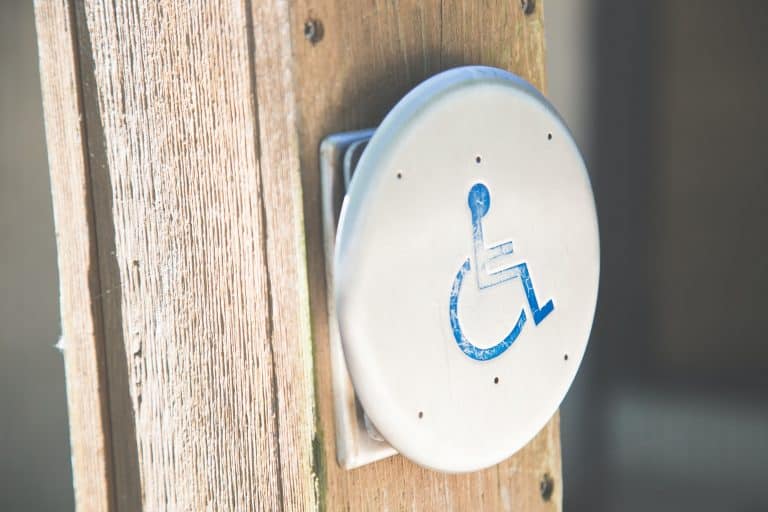Riding a motorcycle is an exhilarating experience. Whether you’re riding one for the first time or have years of experience, you’ll love it. But what if you’re disabled?
Can a disabled person ride a motorcycle? Yes, it is possible for a disabled person to ride a motorcycle. You will need to use adaptive equipment and have someone with you who can help in the event of an emergency. But remember, motorcycles are not as easy to control as cars so be careful when getting on and off them–and you should only do this if your doctor approves of your decision!
In this article, we will cover whether or not a person with a disability can or cannoy ride a motorcycle, what is involved in a person with a disability riding a motorcycle, and some of the most important things to keep in mind when riding with a disability.
First off, is it legal for someone with a disability to ride a motorcycle?
In the USA it is legal for a disabled person to ride a motorcycle. There is no law restricting you from riding with a disability, the same goes for Australia and other countries such as Canada, the United Kingdom, Germany, France, Spain, and Brazil. It is however important to note that in different countries different levels of adaptive equipment such as hand controls and an engine cut-out switch in order to do it safely are needed
What type of disabilities make riding dangerous?
Some types of disabilities that could potentially become dangerous when riding motorcycles are:
Blindness or limited vision: can make it difficult to see other motorists.
Paralysis, amputation, cerebral palsy, and cognitive limitations: these types of disabilities are likely to affect a motorcyclist’s ability to operate the clutch lever and brakes in an emergency situation. This affects their safety too as they may not be able to stop the motorcycle in time.
Mental health conditions: can make it difficult for a motorcyclist to assess their own safety and that of other motorists, as well as how much risk they are willing to take on when riding their motorcycle. For example, someone with depression may not have enough energy or motivation to ride safely but still want to.
We recommend that you contact a specialist organization, like The Royal Association for Disability and Rehabilitation (RADAR), who provide advice on how disabled people can continue with their lives as much as possible. They may also have information about adaptive equipment or modifications that could help make it easier to ride a motorcycle if one has an impairment.
Is it expensive for a disabled person to ride a motorcycle?
Depending on the level of disability, a disabled person may need to purchase adaptive equipment such as hand controls and an engine cut-out switch. All of these adaptive equipment are expensive and involve modifying your bike. There are also other costs that will increase the cost of riding a motorcycle, for instance:
- Adaptive clothing like gloves or jackets
- Wheelchair ramps and modifications to cars in order to transport them to motorcycle retailers
- Additional Insurances
- Additional modifications to bikes
- Cost of having another person with you (it is always recommended that a rider with a disability rides with a buddy)
If you or someone you know is living with a disability and wants to start riding, you should consider the below points in order to do so safely:
- Research local laws for where you live.
- Find an experienced, knowledgeable instructor and someone who can afford to give you lessons. It would actually be best to find a mentor who has learned to ride despite a disability.
- Buy a motorcycle that is lightweight with low gear ratios – this will make it easier for the rider to control the bike while maneuvering which should be done by turning the handlebars rather than shifting gears or pressing on/off switches.
- Adapt your bike to meet your needs. You are likely to need a different-sized seat, handgrips, or footrests for example (depending on the nature of your disability).
- If you can’t afford any of these things at this point in time, modify them as much as possible. For example, if you have trouble with one leg, you could put blocks of wood under the opposite foot to just even it out.
- If your disability prevents you from using one arm, try wearing a jacket that has straps on both shoulders so that you can use two hands when riding.
- Buy or modify gloves with an adjustable wrist strap which will allow for more control and comfort. You may also wish to buy leather gloves if you are used to wearing them, as they will provide more protection.
- Find a good adaptive equipment dealer near your location or order online from an outside company.
- Always have someone with you who can help in the event of an emergency
Ultimately, you may decide that riding a motorcycle is not for you and there’s nothing wrong with that! You really don’t know how your body will react until it does it. The only way to find out is by trying. And the more time you have to get used to the idea, the easier it will be.






